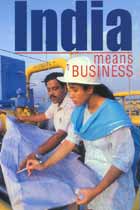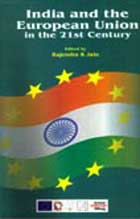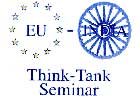| Mr Singh is a Board Member of The Euro-India Centre |
The following paper was presented during the session "NRI/ PIO Business
Networking for Trade & Investment and Contribution of Indian Diaspora
in Europe.
Dear Mr. Prasad, GOPIO Belgium President, distinguished guests and
dear friends.
It is a great privilege to address such an
august gathering and it is a great pleasure to talk about such a
contemporary topic under the auspices of GOPIO. The best compliment
that I came across for what GOPIO is doing came from an Italian
journalist covering this event. She told me that she would like to
replicate GOPIO networking concept for the Italian Diaspora and would
seek advice from PIO’s, without ofcourse consultancy fees. So
compliments to Mr. Thomas Abraham and his team. However before
proceeding further, I would like to thank GOPIO organizers and
particularly Mr. Sunil Prasad who kindly provided me the opportunity
to share with you my own perspectives on the role of European PIO’s
and how the goals of GOPIO and The Euro India Centre converge for a
common good.
The Euro-India Centre is a France based young
Euro-India initiative but with an old cherished idea. It is the idea
of building upon the historical ties that have existed between the old
continent and an older sub-continental civilization for centuries.
These ties existed much before the humanity discovered the word
colonization. These will exist long after we have forgotten this word.
At Euro-India Centre we have started working in that direction. I will
talk to you about that a bit later. First as an Indian based in
Europe, please allow me to talk about India and PIO’s.
India has been designated as one of the
biggest emerging markets with tremendous potential for further
development, enormous opportunities for investment and interesting
possibilities of attractive returns.
All very true but now let us see how PIO’s and
particularly European PIO’s are participating in this endeavour.
As per the well-known statistics and as also
mentioned in GOPIO’s own Concept paper, the Indian Diaspora is 21
million strong; it is geographically spread in 110 countries; it
generates USD 160 billion or something to that effect.
So a mere 2% of Indian population earns almost
one third of India’s total GDP.
My first emphatic reaction to above is –
Impressive indeed especially when seen in the context of the highly
flattering PIO success stories and how the PIO community has helped
raise India’s profile.
My second but a provocative reaction is, ‘so
what’.
Now let us look at the ‘so what’ in
perspective in terms of the FDI flowing into the country. The size of
the Indian economy is in the range of about USD 500 billion and the
current FDI is about USD 5 billion i.e. 1% of Indian economy. Out of
this USD 5 Billion, as per GOPIO Concept paper, Indian Diaspora
invests about 10% i.e. USD 500 million. So purely arithmetically
speaking, PIO contribution as FDI is 0.01 % of the Indian economy.
Let us also look at it another way; in terms
of the Indian requirement of the most important infrastructure – power
generation. An amount of USD 500 million can perhaps build a 500 MW
power plant. Now India’s total installed commercial power generation
capacity is about 130,000 MW for the population of a billion. At a per
capita level, even to reach the current level of China, we have to
increase the power generation three times and very many times to come
anywhere near the level of the developed countries.
The International Energy Agency estimates that
India will require upto USD 665 billion investments in power sector
between 2001 and 2030. This averages about $ 22 billion every year.
And this is only in one sector. There are other equally important
sectors for investment in a big and developing country like India. So
once again we need to see the figure of $ 500 million in the
perspective of massive Indian requirements.
So here is the moral of the story. Just as a
500 MW is a drop in the ocean of India’s power requirements, so is the
500 million USD investment for a nearly USD 500 billion economy. On
one hand, the Indian Diaspora’s is generating equal to 33% of this
Indian economy, on the other its actual contribution to the Indian
economy is less than 0.01%.
But as the French would say “Ce n’est encore
fini”.
As per the published statistics, the big chunk
of the investment in India comes from U.S. based PIO’s. So a big part
of this drop in the ocean is coming from outside Europe and not from
European PIO’s. Shall we say this is our first obvious conclusion?
Next, as per the Federation of Indian Chamber
of Commerce and Industry, the Indian exports to the European Union in
percentage terms have actually declined from about 29% to a little
over 21% during the last decade. The imports have more or less
remained stagnant during the same period.
It has also been observed that exports to U.S
have been increasing consistently. I believe that we can ask ourselves
what we in Europe are doing? Comparatively much less. Shall this be
our second conclusion?
Thus so far we have reached two conclusions.
One, that irrespective of the accuracy of the above figures, the
global PIO community’s contribution is rather modest in the overall
perspective. Second, that within this limited figure, the European
PIO’s contribution has not been very significant, at best.
However it is not my intention to go into the
reasons behind this situation. That is not the focus of my talk. What
is clear however, is that our contribution or involvement can, has to
and must increase out of Europe.
Now I will like to talk about another aspect.
The focus of our investment generally remains
in IT, Biotech, manufacturing or similar sunrise industries where the
returns can be quick. But should this be the lone reason for us to
invest in India? Should these be the only areas for us to invest in?
I raise these questions to ourselves in the
background of the specific initiatives that are interesting examples
of what PIO’s can do in terms of investing in India.
There are cases like the U.S. based ex-IIT
students who have committed to raise substantial amounts to improve
the working of their alma-matter. Others have actually opened
educational institutions or hospitals in their places of origin in
India. Many have set up their back offices in India. Many have taken
upon themselves the promotion of Indian products in Europe. Still
others are facilitating the interaction of European companies with
their Indian counterparts.
Some of the Indian Educationists have created
a niche for themselves in the European academic institutions. In turn
this has facilitated noticeable increase in the number of Indian
students to come to Continental Europe for higher and specialized
studies. Still lot of work remains to be done.
Indeed the investment can take many forms and
there are many types of examples in different fields where PIO’s can
invest not only to have a return but also to fill a social need. It
can be education, health, infrastructure and many others.
So all in all for European PIO’s, it is time
to catch up particularly with those from U.S.
The first step is symbolized by the kind of
gathering we have today, a gathering that promotes networking between
the PIO’s from all over but particularly among those based in Europe.
GOPIO must be complimented for this initiative that has brought about
so many PIO’s together here today. But we need to reach out to another
big segment, that of the Euro-Indians.
Now who are the Euro-Indians? We call our
members not Europeans, not Indians but simply Euro-Indians. These can
be Indians or Europeans as long as they share the ideal of promoting
interaction between Europe and India. At the Euro-India Centre we are
very pleased to complement GOPIO’s efforts in this direction – GOPIO
among Persons of Indian Origin and the Centre among Euro-Indians. Our
seriousness for this endeavour can be gauged by our presence here,
perhaps the largest group besides ofcourse the GOPIO itself: Ms. Neena
Gill from U.K, Mr. Amal Mukhopadhyay from Germany, M/s P.K.Das, Wahid Saleh, Raghu
Kolli all from Holland, Sanjeev Rao and myself from France and Michel
Sabatier a French from France being present but virtually.
It is in this background that I would like to
talk about the Euro India Centre, what it has undertaken to accomplish
and how it is going about it. Unfortunately it will not be possible to
make a power point presentation on the Centre due to some technical
bug in the facilities here. So let me explain the contents of the
slides.
Ladies and Gentlemen, I thank you for your
patient hearing and would once again like to congratulate the GOPIO
organizers for this successful function and would like to thank them
for giving us this opportunity.














